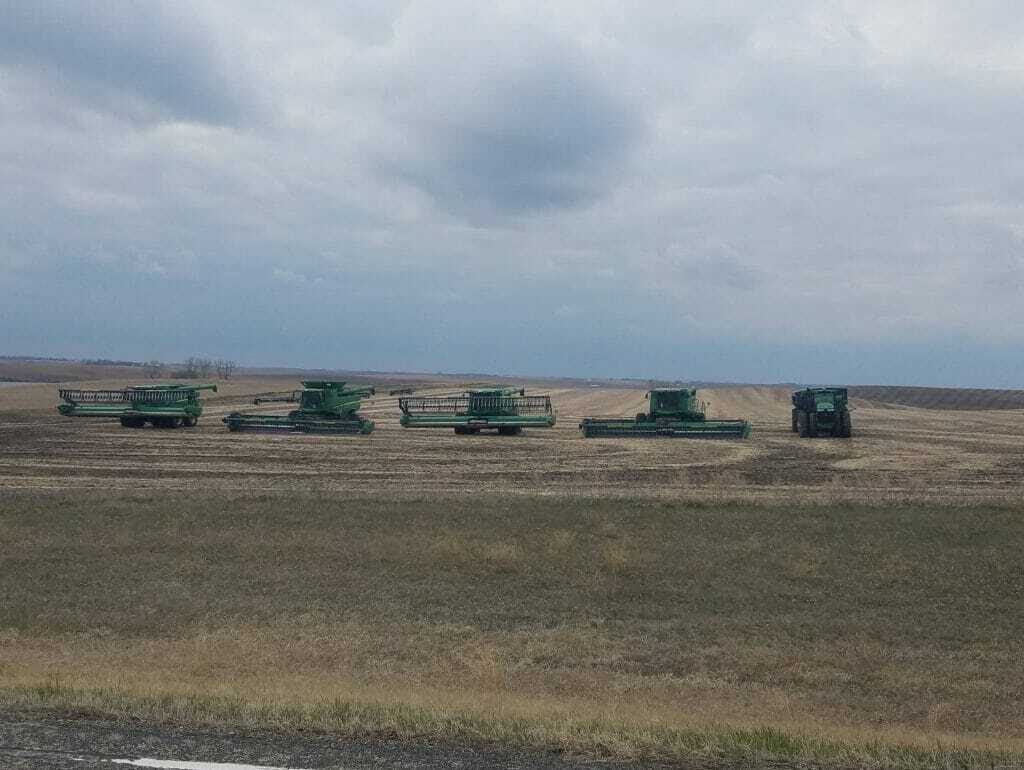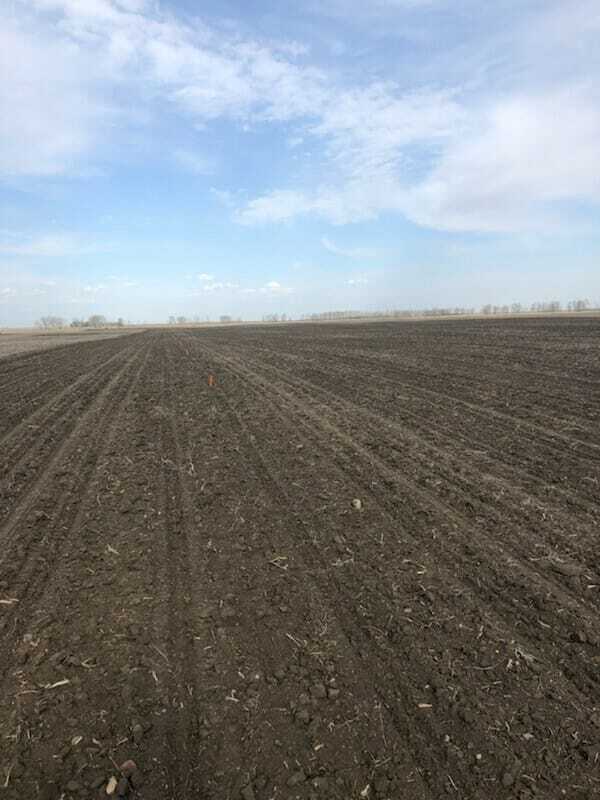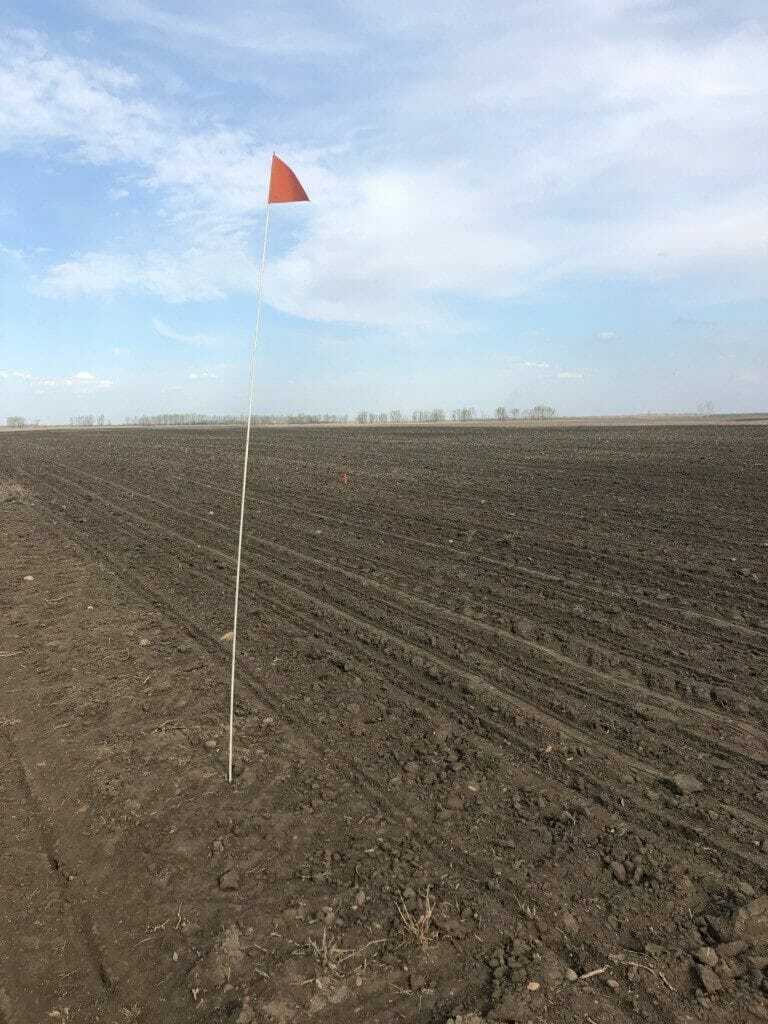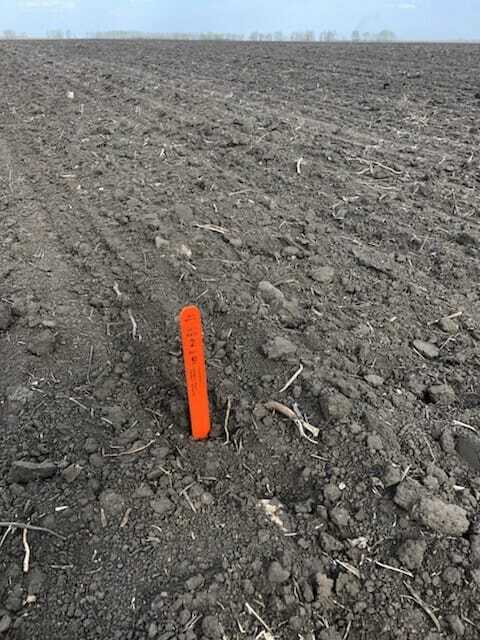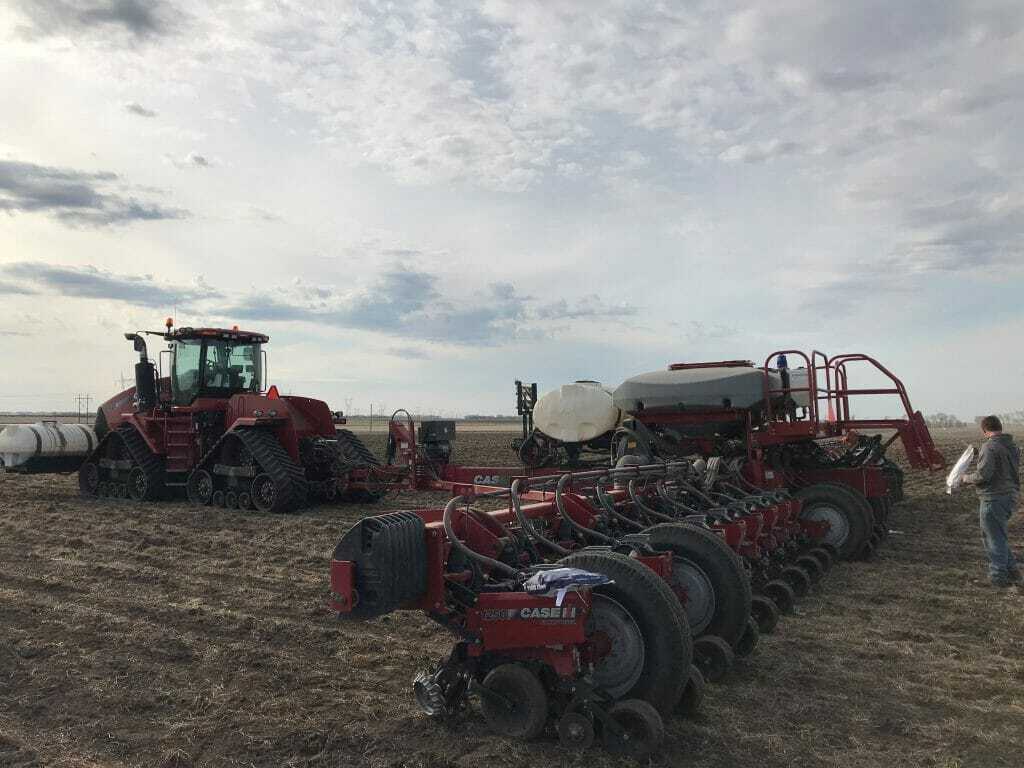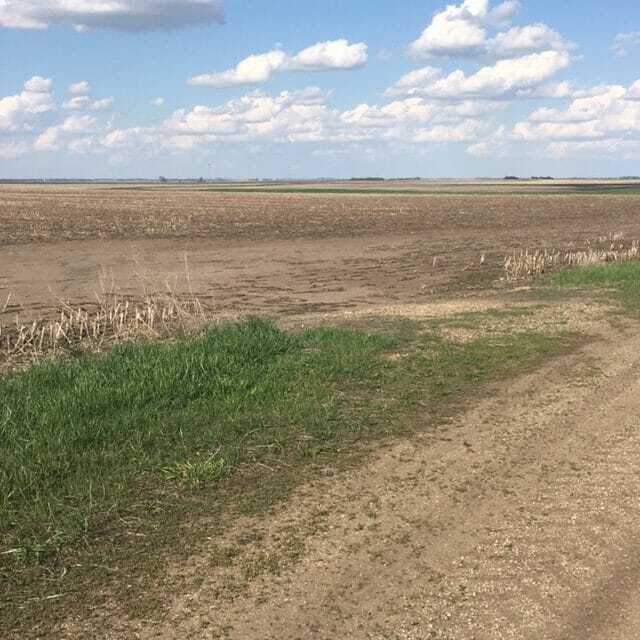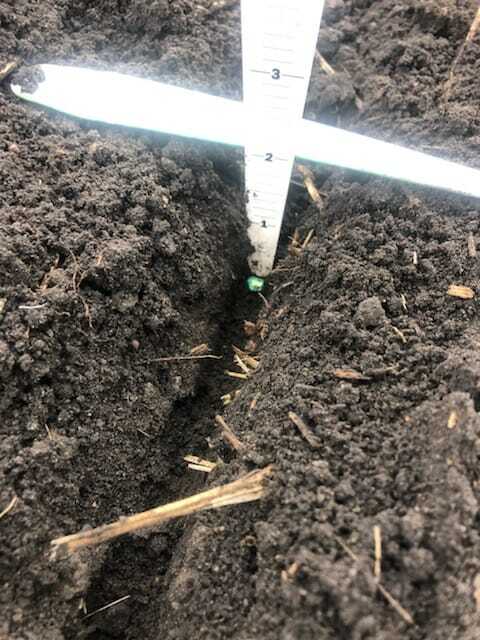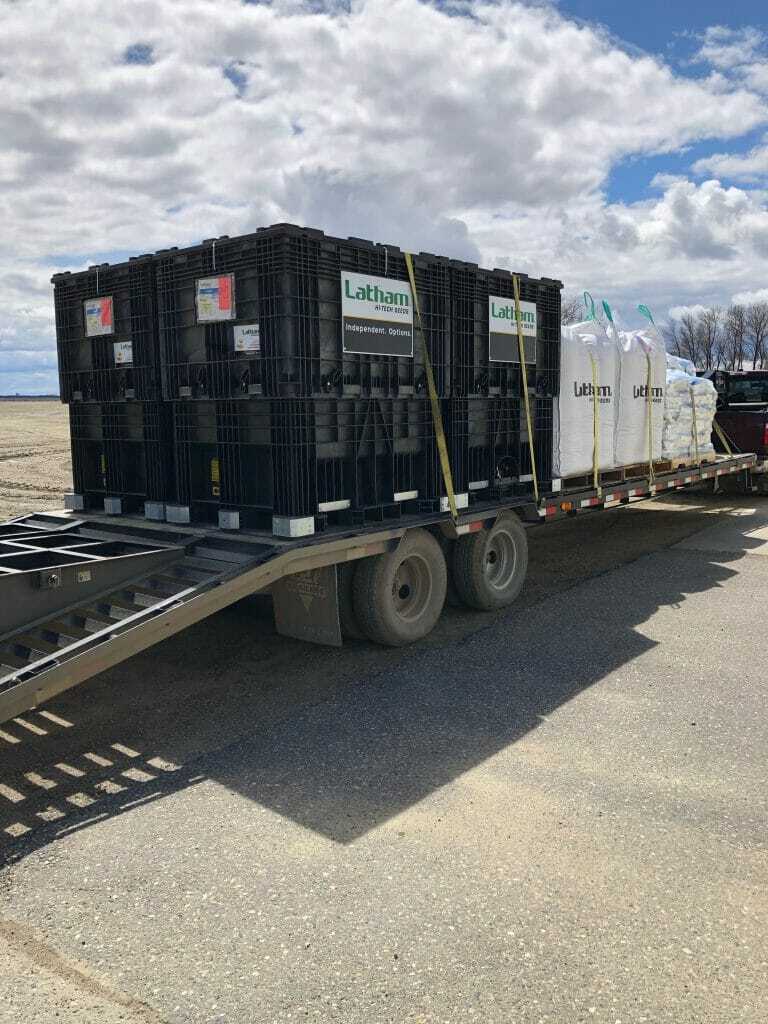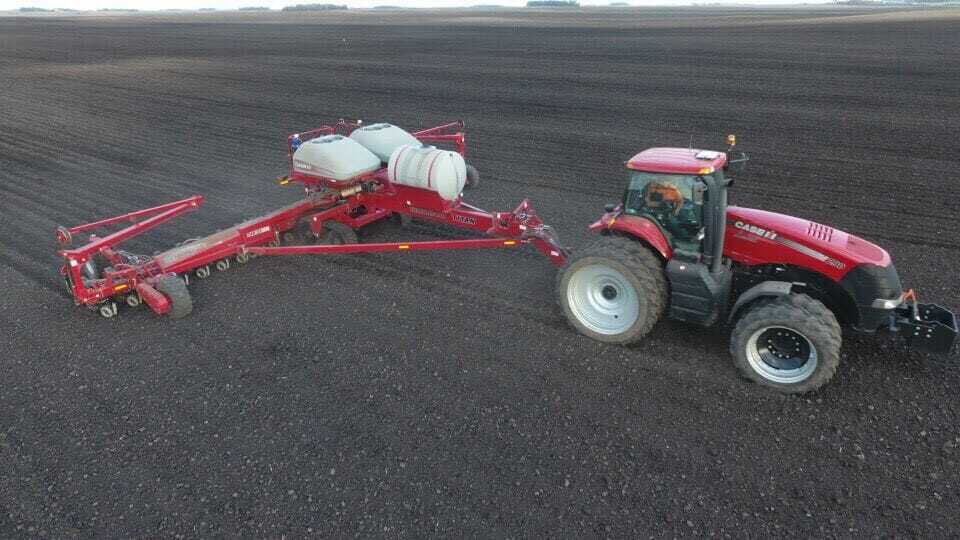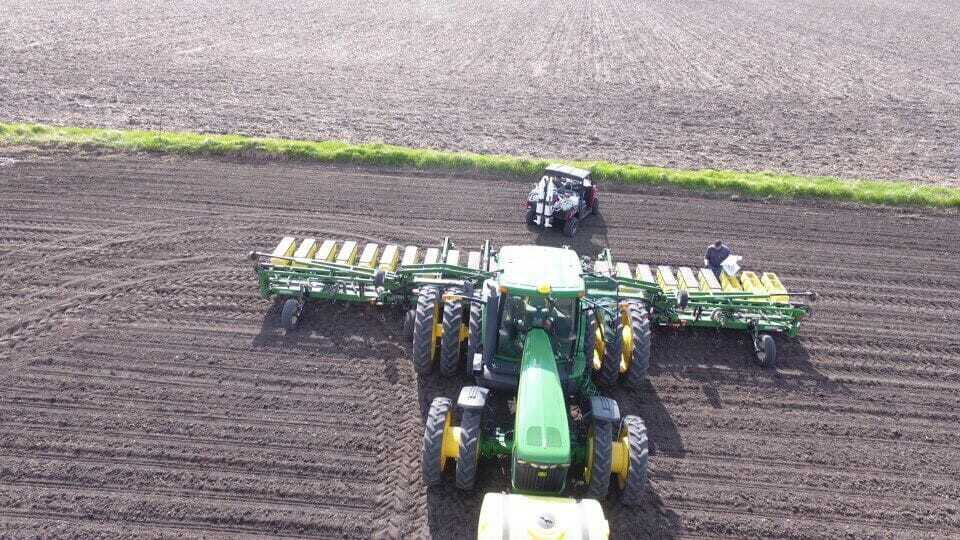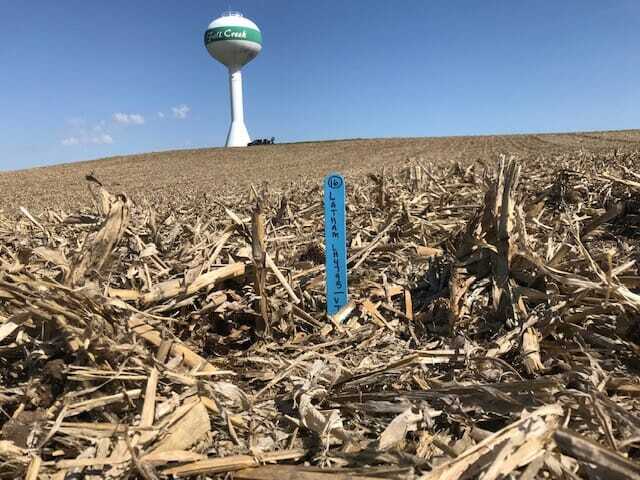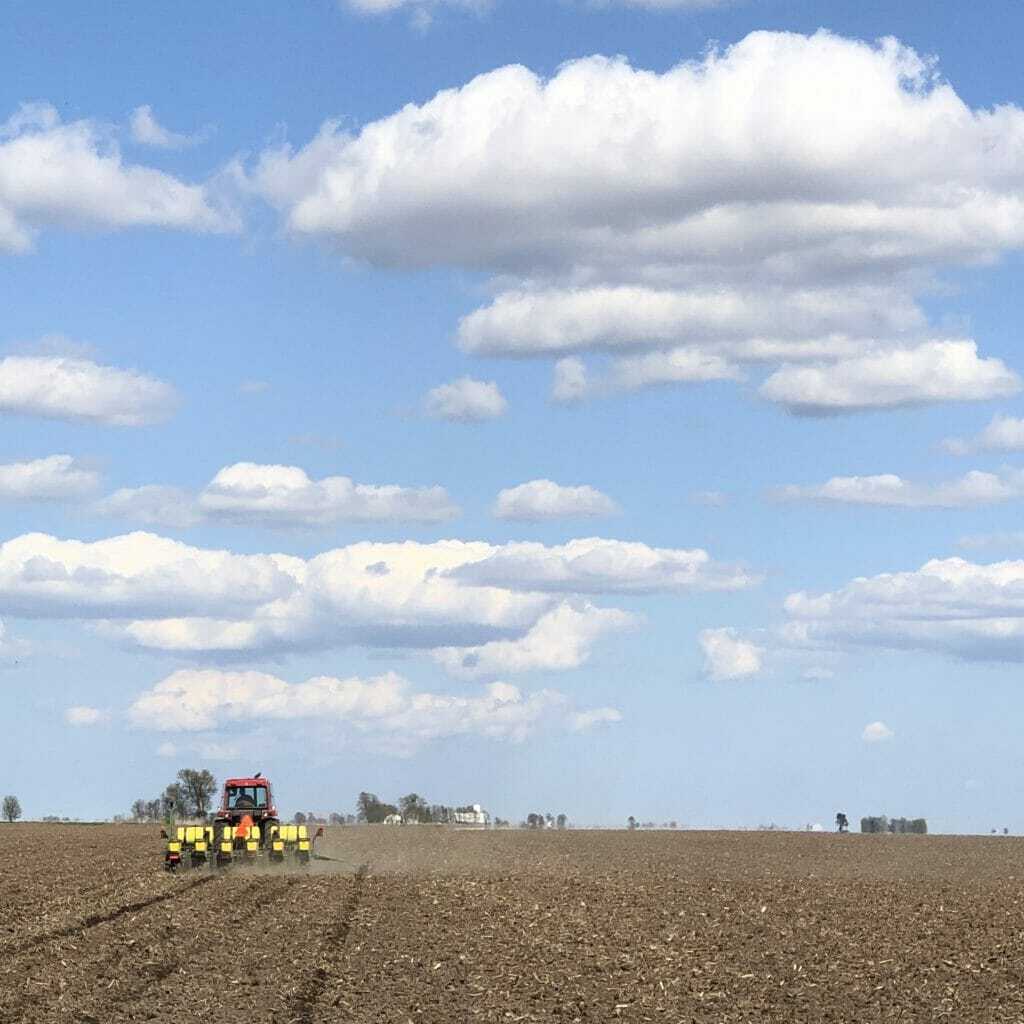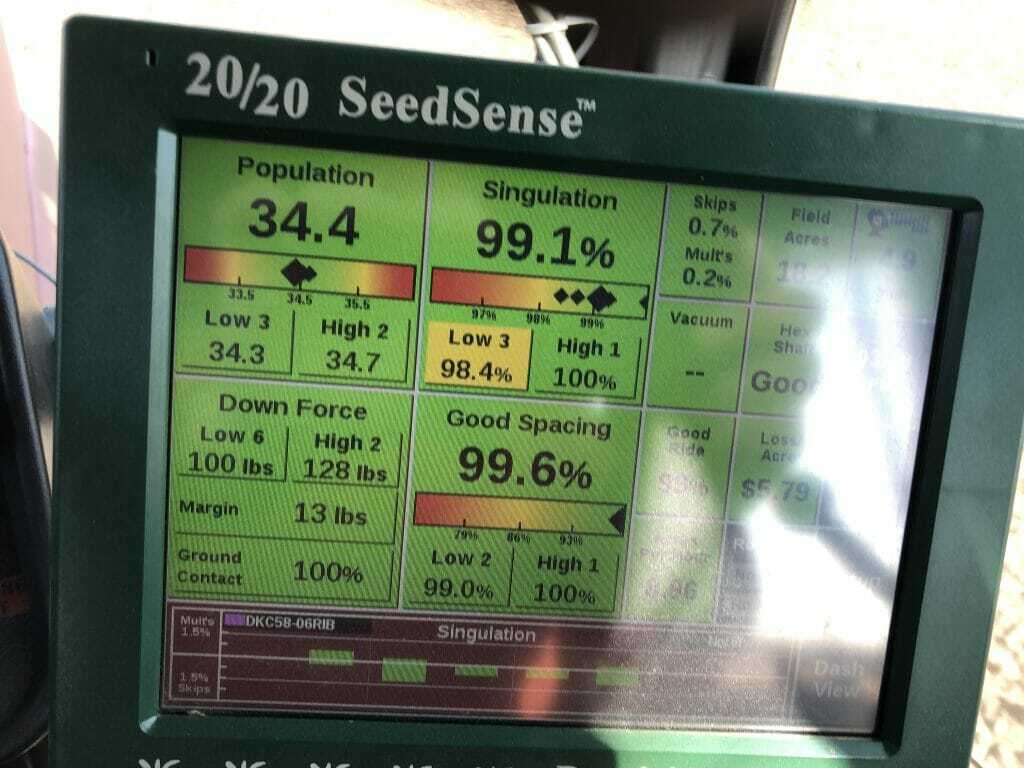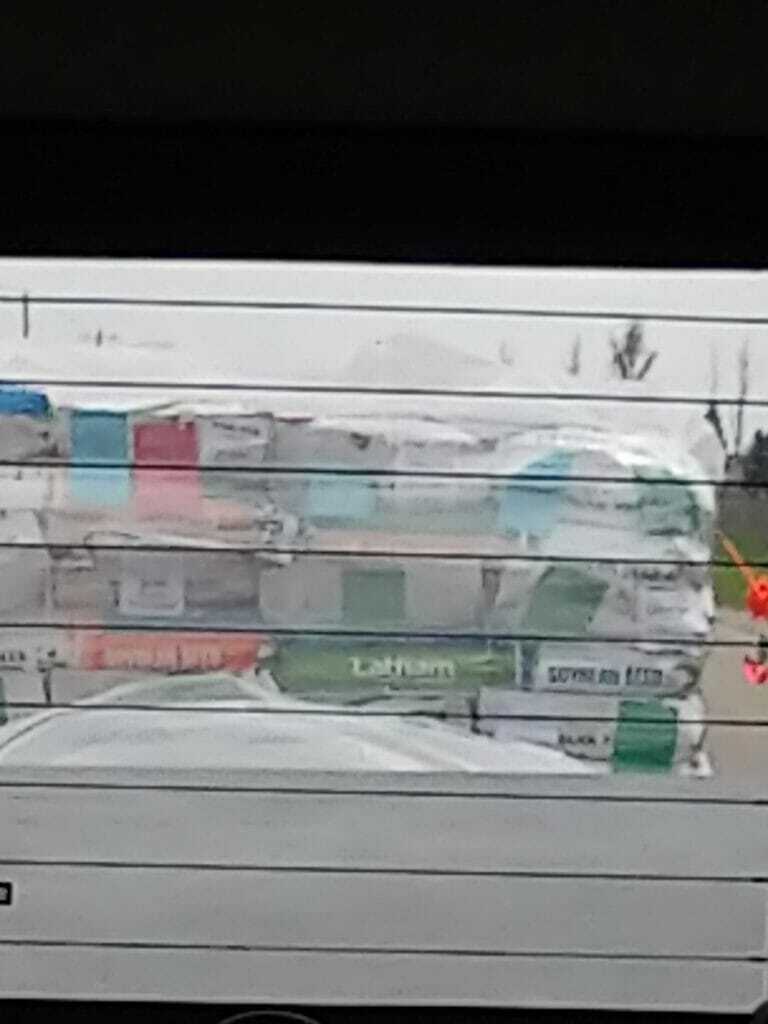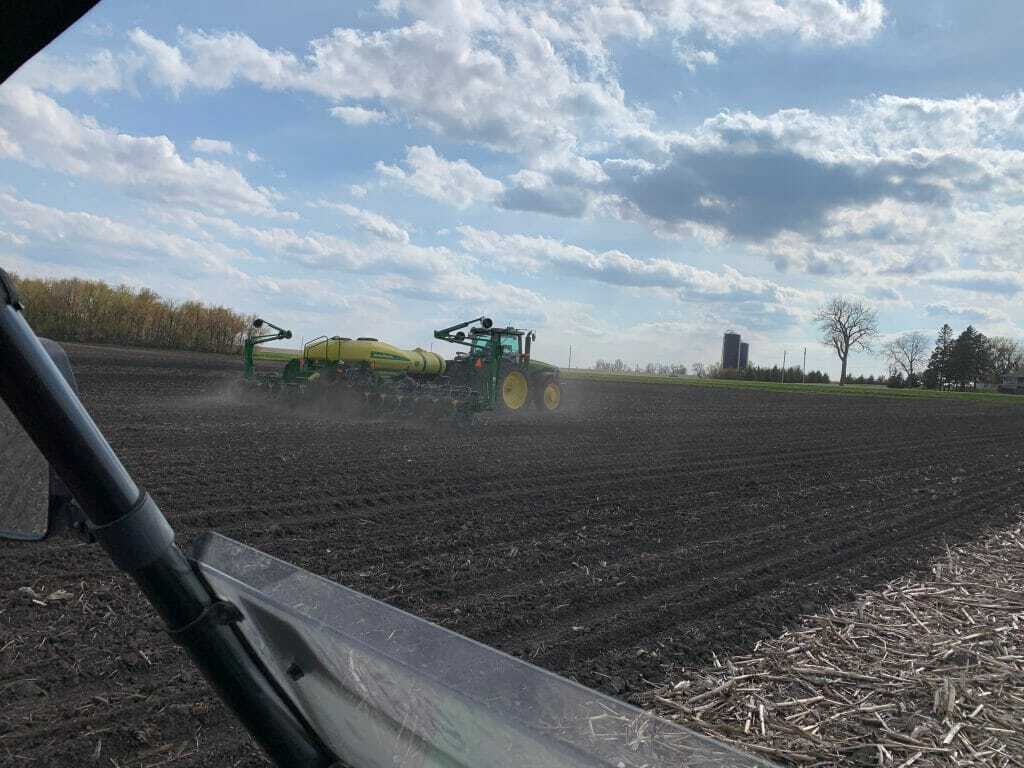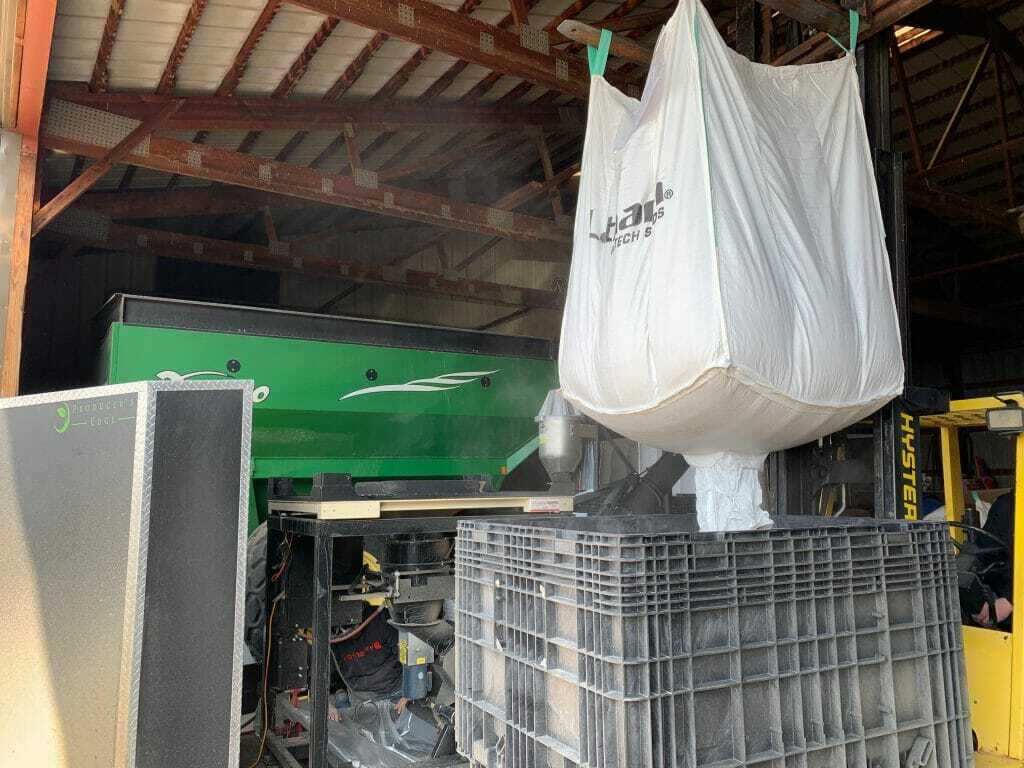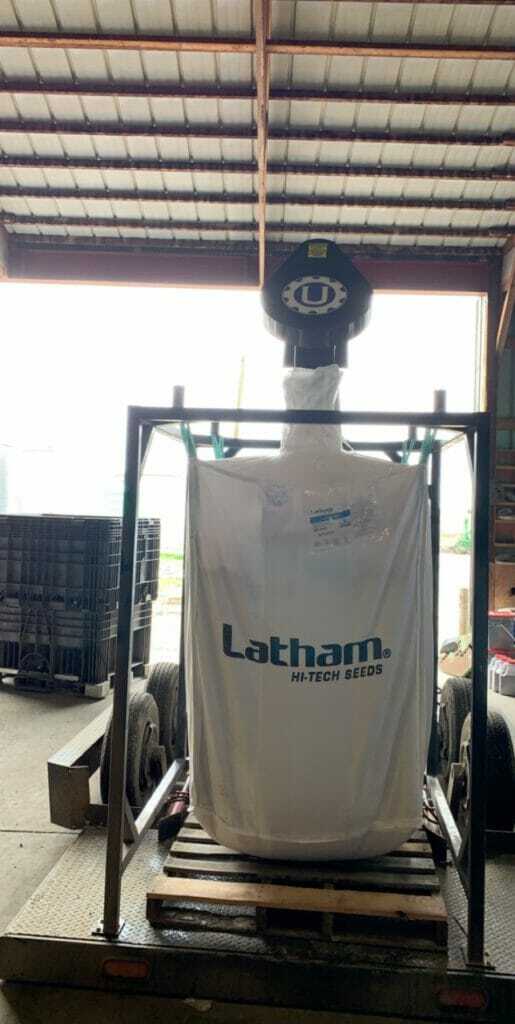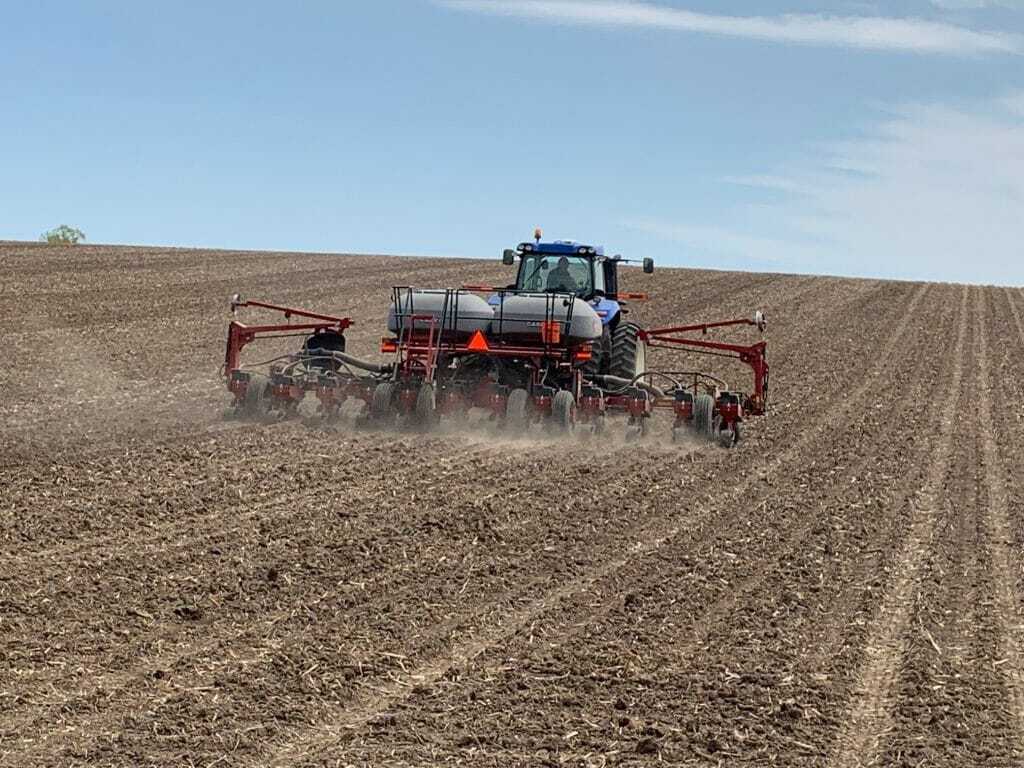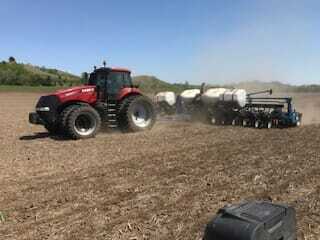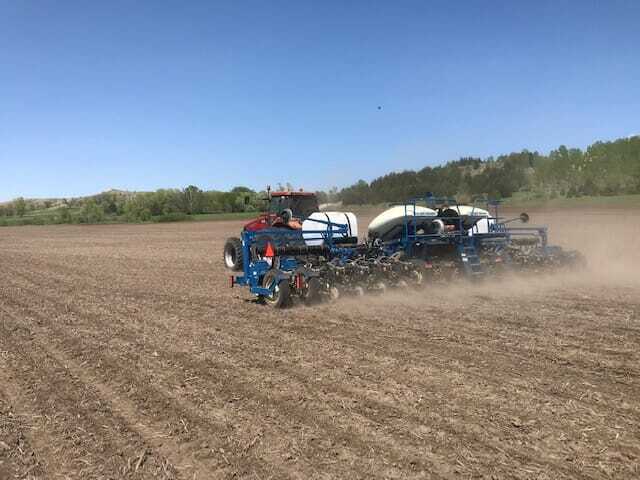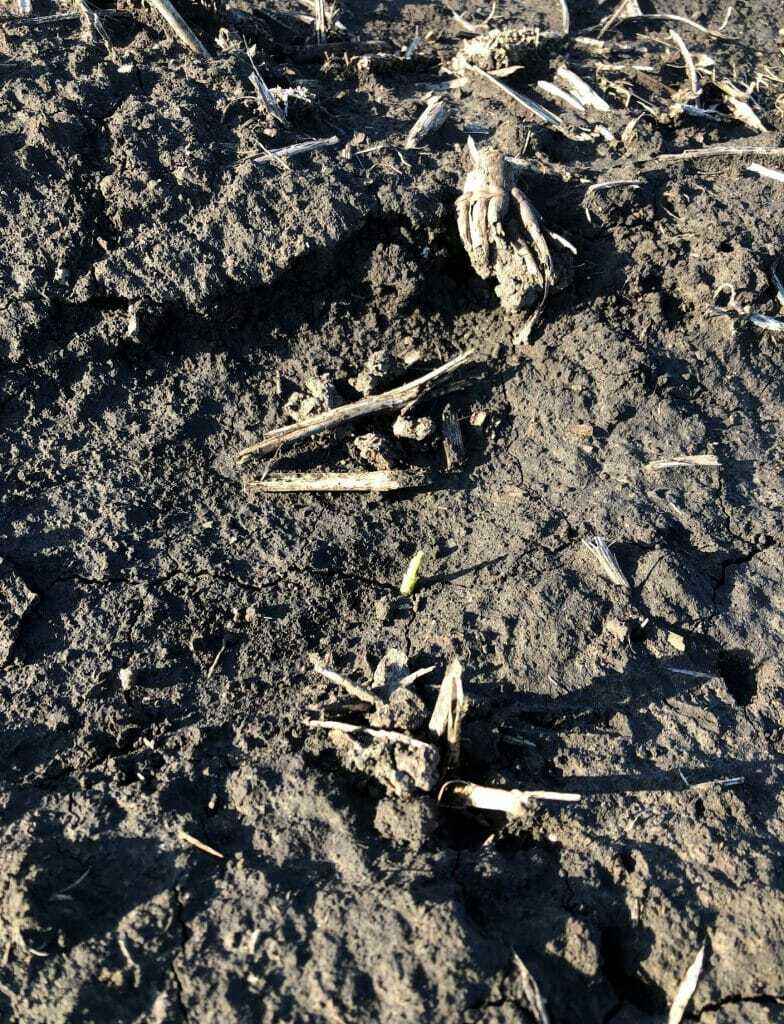May 15, 2019 Crop Reports
Eastern North Dakota
Brain McNamee
I forgot how many thousands of acres of soybeans were left standing yet this spring. I believe last year’s crop may finally be 100% harvested.
Southeast North Dakota
Gary Geske
While it doesn’t look like much yet, these areas will provide important training for Latham sales managers, dealers and customers. This research plot planted near Minot, North Dakota, will give us replicated yields to help confirm our current seed lineup. We will watch silage hybrids and compare seed treatments, as well as conduct population studies. These plots also will give us a look into the future on new hybrids with tolerance to drought and heat stress, using natural selection without including traits. In- field training camps, which will be held throughout the growing season, help Latham sales managers and dealers earn the trust of their customers when making seed selections.
Northeast South Dakota
James Keltgen
This sun is finally shining! Big rains are expected, with totals nearing 4 inches this weekend, so the race is on in Northeast South Dakota. Farmers are getting a good start on corn, and a few people are planting soybeans since the fields are fit. We will find out how much corn can be planted in four days as that looks to be our short window of opportunity. Some farms in Central and Southeast South Dakota received rain Monday night, which delayed planting further.
Southeast South Dakota
Ramie Coughlin
As I drive across my territory, it’s strange to see bare fields. Wet weather has delayed planting again. The good news is that we’re in the middle of 5 days of warm weather and sunshine. I’m hopeful that we’ll see some corn go in the ground the next couple days. While we’re all eager to get going, I want to remind farmers that it’s still too early to back off on corn maturities. Research has shown that you can safely plant your fuller season hybrids until June
Northern Minnesota
Ken Highness
The main objective at planting time is to provide seed with an environment that promotes rapid germination and vigorous early growth. Optimal planting depth for corn in 2 inches deep and 1.5 inches for soybeans. Latham Dealer is checking seed depth in a field of LH 3937 VT2 PRO RIB.
It’s important to get out of the cab and check planting depth. Two major problems can result from planting too deep: delayed emergence and uneven stands. Corn seed that is planted too shallow can lead to rootless corn syndrome, which causes corn plants to fall over due to poor nodal root development.
Southern Minnesota
Justin Prokosch
Last week’s wet weather allowed us to delivered to more seed to customers. Thankfully, we got some dry weather. Most farmers started planting corn this week, and I was able to put in a plot near Willmar.
Northern Wisconsin
Joe Salter
Soil temperatures finally reached the 50’s, but timely rains have kept most farmers from turning wheels in northern Wisconsin. Many farmers have yet to plant any crop. We were fortunate to get two corn plots in the ground this week, one in Fall Creek and one in Almena. 
Southern Wisconsin
Greg Mair
Farmers in southern Wisconsin finally go back in the fields on Monday. Now that fields are fit, we’re working to dial in the monitors for best spacing, down pressure and singulation. Maximizing the planter singulation can increase profit potential on the farm by properly placed seed and full utilization of moisture and sunlight.
The weather cooperated on Monday, so we put in a corn test plot in Oshkosh. We’re hoping for a good week of field work, so we can make a lot of progress on corn. The first corn fields that were planted have yet to emerge, and seed has been laying in the ground for three weeks now.
North Central Iowa
Cory Greiman
Earlier this week I delivered seed to cooperators in South Central Minnesota and North Central Iowa who will plant Latham® SuperStrip soybean plots. This on-farm research plays an important role in selecting soybeans for our lineup.
Northeast Iowa
Craig Haaland
After a short week of not being in the fields, farmers were rolling again on Sunday and Monday. This photo shows a Latham® Hybrids SuperStrip Plot we planted Monday in Southeast Minnesota. The soils were ideal. A lot of corn is going in the ground in a short amount of time as farmers are eager to finish before moving on to planting soybeans. Not many acres of soybeans have been planted yet in my territory.
Northwest Iowa
Darin Chapman
Northwest Iowa could receive four inches of rain this weekend, so it has been nice to make some corn planting progress this week. Farmers are eager to start planting soybeans, but it’s important to wait for fit conditions to avoid issues going forward. Soils have been wet and cold this spring, but a good seed treatment like Latham’s Soyshield Plus helps protect yield.
Eastern Iowa
Jerry Broders
After last Thursday’s rain in Eastern Iowa, planters didn’t start rolling again until Sunday evening or late Monday morning.
Western Iowa
Larry Krapfl
At last! Favorable weather returned, so we are able to resume planting Latham plots.
West North Central Iowa
Bart Peterson
This field of L 1858 R2, which was planted April 21 near Odebolt, Iowa, is just popping out of the ground.
Central Iowa
Bryan Rohe
Farmers are trying to get the last of their corn in the ground. There was a very small planting window last week, and farmers throughout Central Iowa got rained out Monday evening. During the past week, some of the early planted corn has emerged. Some corn plants are tall enough to row, and the stand looks pretty good. With soil temps hovering around 46 to 47 degrees at 2 to 3 inches deep, crop development is slow. Heat units are about three weeks behind.
